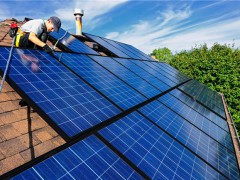西得克薩斯中質(zhì)原油8月4日達(dá)到每桶83美元
沙特阿拉伯已表示,可能會(huì)進(jìn)一步延長(zhǎng)或深化減產(chǎn)
影響價(jià)格的主要因素仍是全球最大消費(fèi)國(guó)的經(jīng)濟(jì)前景
據(jù)油價(jià)網(wǎng)2023年8月6日?qǐng)?bào)道,8月4日的一周是油價(jià)狂飆的一周。標(biāo)普500指數(shù)在美國(guó)公布多年來(lái)最大庫(kù)存削減的消息后大漲,但隨后在惠譽(yù)國(guó)際將美國(guó)信用評(píng)級(jí)從AAA下調(diào)至AA+后同樣大幅下挫。
僅僅一天之后,油價(jià)再次反彈,因?yàn)樯程匕⒗扇×藥缀跛腥硕碱A(yù)料到的行動(dòng),將每天100萬(wàn)桶的自愿再減產(chǎn)協(xié)議延長(zhǎng)至9月份。每個(gè)人都在猜測(cè)價(jià)格將何去何從,但分析師們表示,這種漲勢(shì)不會(huì)持續(xù)下去。
這似乎是最近接受《華爾街日?qǐng)?bào)》調(diào)查的大多數(shù)分析師的看法。根據(jù)《華爾街日?qǐng)?bào)》的調(diào)查,布倫特原油價(jià)格在第三季度將達(dá)到平均每桶87美元,并在2024年第二季度之前保持在這一水平附近。
對(duì)于西得克薩斯中質(zhì)原油,分析師預(yù)計(jì)第三季度和2024年上半年的價(jià)格為每桶83美元。盡管歐佩克+繼續(xù)減產(chǎn),亞洲經(jīng)濟(jì)也在反彈。
他們認(rèn)為油價(jià)不會(huì)大幅上漲的原因是,全球從疫情中復(fù)蘇的速度比預(yù)期要慢,有趣的是,沙特阿拉伯的自愿再減產(chǎn)增加了其備用產(chǎn)能。
至于備用產(chǎn)能,幾年前,當(dāng)石油需求在第一波封鎖后開(kāi)始復(fù)蘇時(shí),這是一個(gè)很大的擔(dān)憂。人們擔(dān)心,由于投資不足,全球石油行業(yè)沒(méi)有足夠的備用產(chǎn)能來(lái)應(yīng)對(duì)潛在的需求激增。
目前,這一警告尚未得到驗(yàn)證,但沙特阿拉伯正致力于在中期內(nèi)擴(kuò)大其備用產(chǎn)能。然而,沙特阿拉伯在這樣做的同時(shí),也限制了產(chǎn)量。通過(guò)限制產(chǎn)量,沙特阿拉伯限制了買(mǎi)家可以立即獲得的原油數(shù)量,這使得增加備用產(chǎn)能的論點(diǎn)有點(diǎn)無(wú)關(guān)緊要。
沙特阿拉伯可能會(huì)按照計(jì)劃將其原油日產(chǎn)能總量提高到1300萬(wàn)桶,但如果它每天只生產(chǎn)900萬(wàn)桶,以保持油價(jià)在80美元以上,那么其備用產(chǎn)能的規(guī)模對(duì)日常甚至長(zhǎng)期價(jià)格走勢(shì)的重要性都很小。
然而,還有一個(gè)因素限制了油價(jià),那就是海上鉆井活動(dòng)的反彈。咨詢機(jī)構(gòu)伍德麥肯茲7月份報(bào)告稱,由于各公司加大海上勘探力度,深水鉆機(jī)的利用率正在上升。據(jù)《華爾街日?qǐng)?bào)》報(bào)道,高盛公司在最近的一份報(bào)告中也提到了這種反彈。
高盛銀行稱,“過(guò)去一年歐佩克備用產(chǎn)能大幅增加,國(guó)際海上項(xiàng)目恢復(fù)增長(zhǎng),以及美國(guó)石油生產(chǎn)成本下降,限制了油價(jià)的上行空間”。
值得注意的是,隨著美國(guó)石油生產(chǎn)成本的下降,產(chǎn)量增長(zhǎng)也在放緩,這應(yīng)該會(huì)推動(dòng)油價(jià)上漲。EIA最近預(yù)測(cè),美國(guó)頁(yè)巖油產(chǎn)量在7月份達(dá)到峰值后,8月份將出現(xiàn)下降。8月份頁(yè)巖油平均日產(chǎn)量將下降至940萬(wàn)桶,這種下降將由目前產(chǎn)量最高的頁(yè)巖盆地二疊紀(jì)盆地引領(lǐng)。
與此同時(shí),沙特阿拉伯表示可能會(huì)進(jìn)一步延長(zhǎng)或深化減產(chǎn)。沙特阿拉伯似乎又回到了“不惜一切代價(jià)”的模式,將油價(jià)維持在更接近其政府支出計(jì)劃的水平。在短期內(nèi),其他產(chǎn)油國(guó)幾乎沒(méi)有辦法抵消減產(chǎn)帶來(lái)的影響。
影響油價(jià)的主要因素仍是最大消費(fèi)國(guó)的經(jīng)濟(jì)前景。直到最近,對(duì)美國(guó)經(jīng)濟(jì)衰退的擔(dān)憂還困擾著交易商們,但最近前景變得明朗,這推動(dòng)了油價(jià)上漲。
隨后惠譽(yù)國(guó)際下調(diào)了美國(guó)信用評(píng)級(jí),盡管美國(guó)財(cái)政部長(zhǎng)珍妮特·耶倫表示這“完全沒(méi)有根據(jù)”,摩根大通的杰米·戴蒙也稱其“荒謬”,但評(píng)級(jí)下調(diào)震動(dòng)全球市場(chǎng)。
事實(shí)上,戴蒙表示,美國(guó)經(jīng)濟(jì)表現(xiàn)非常好,即使出現(xiàn)衰退,也不會(huì)有什么大不了的。戴蒙日前在接受CNBC采訪時(shí)表示:“即使我們陷入衰退,這也很好。”“風(fēng)暴云部分仍然存在。”
正是這片風(fēng)暴云,以及歐洲和亞洲的經(jīng)濟(jì)趨勢(shì),將在未來(lái)幾個(gè)月繼續(xù)影響油價(jià)。嚴(yán)重的經(jīng)濟(jì)衰退警告尚未成為現(xiàn)實(shí),如果有的話,這一事實(shí)有助于緩和油價(jià)的上漲。但如果沙特阿拉伯決定加大減產(chǎn)力度,而另一個(gè)產(chǎn)能大國(guó)也配合自己的減產(chǎn)措施,那么目前限制油價(jià)的因素可能減弱到足以讓油價(jià)出現(xiàn)更強(qiáng)勁的反彈。
李峻 譯自 油價(jià)網(wǎng)
原文如下:
How Long Will the Oil Price Rally Last?
· WTI crude reached $83 per barrel on Friday.
· Saudi Arabia has indicated it may extend the cuts further or deepen them.
· The main drag on prices remains the economic outlook for the biggest consumers.
It’s been a wild week for oil prices. First soaring on news of the biggest U.S. inventory draw in years, benchmarks later slumped just as sharply when Fitch downgraded the United States’ credit rating from AAA to AA+.
Barely a day later, prices rebounded again after Saudi Arabia did what pretty much everyone expected, extending its voluntary production cuts of 1 million barrels daily into September. Where prices go from here is anyone’s guess, but analysts are saying the rally won’t last.
That appears to be the opinion of the majority of analysts polled recently by the Wall Street Journal. Per that poll, Brent crude should average $87 per barrel in the current quarter and remain around this level until the second quarter of 2024.
For West Texas Intermediate, the analysts see a price of $83 per barrel this quarter and into the first half of 2024. Even with continuing cuts from OPEC+ and a rebounding the economy.
The reason they don’t see prices much higher is that the recovery from the pandemic is moving more slowly than expected and, interestingly, that Saudi Arabia’s voluntary cuts have increased its spare production capacity.
As for spare production capacity, that was a substantial concern a couple of years ago when demand for oil began to recover after the first wave of lockdowns. The concern was that, because of underinvestment, the global oil industry had not enough spare capacity to respond to a potential surge in demand.
For now, this warning has not had to be tested, but Saudi Arabia is working on expanding its spare capacity over the medium term. While it does that, however, it is also limiting production. By limiting production, it is limiting the amount of oil immediately available to buyers, which renders the argument for greater spare capacity a little irrelevant.
Saudi Arabia may boost its total production capacity to 13 million barrels daily, as it plans to do, but if it is only producing 9 million barrels daily to keep prices above $80, the size of its spare capacity has very little importance for day-to-day and even longer-term price developments.
There is one more factor that is acting as a cap on prices, however, and that is the rebound in offshore drilling. Wood Mackenzie reported last month that deepwater rig utilization is on the rise as companies step up exploration offshore. Goldman Sachs also noted this rebound in a recent note, cited by the WSJ.
“The significant rise in OPEC spare capacity over the past year, the return to growth in international offshore projects, and declining U.S. oil production costs limit the upside to prices,” the bank said.
It’s worth noting that along with falling oil production costs in the U.S., production growth is also slowing down, which should boost the upside to prices. The EIA recently projected that shale oil production is set to decline this month after hitting a peak in July. The August decline, to 9.4 million bpd, will be led by the Permian, the most productive shale basin right now.
Meanwhile, Saudi Arabia has indicated it may extend the cuts further or deepen them. Saudi Arabia appears back into “Whatever it takes” mode to keep prices at levels that are closer to its government spending plans. And there is little any other producer can do to counter the effect of those cuts in short order.
The main drag on prices remains the economic outlook for the biggest consumers. Until recently, the fear of a recession in the U.S. held sway over traders, but recently the outlook brightened, which contributed to higher prices.
Then came the Fitch downgrade and although Treasury Secretary Janet Yellen said it was “entirely unwarranted” and JP Morgan’s Jamie Dimon called it “ridiculous”, the downgrade rattled markets.
In fact, Dimon said that the U.S. economy is doing so well that even if a recession does emerge, it will not be that big of a deal.
“It’s pretty good, even if we go into recession,” Dimon said, as quoted by CNBC, this week. “The storm cloud part is still there.”
It is this storm cloud, along with economic trends in Europe and Asia that will continue to shape oil prices over the coming months. Grave recession warnings have yet to materialize, if ever, and that fact has served to moderate the rise of oil prices. But if Saudi Arabia decides to deepen the cuts and the other big producer plays along with its own curbs, the current factors that cap oil prices may weaken enough to allow a stronger rally.
免責(zé)聲明:本網(wǎng)轉(zhuǎn)載自其它媒體的文章及圖片,目的在于弘揚(yáng)石化精神,傳遞更多石化信息,宣傳國(guó)家石化產(chǎn)業(yè)政策,展示國(guó)家石化產(chǎn)業(yè)形象,參與國(guó)際石化產(chǎn)業(yè)輿論競(jìng)爭(zhēng),提高國(guó)際石化產(chǎn)業(yè)話語(yǔ)權(quán),并不代表本網(wǎng)贊同其觀點(diǎn)和對(duì)其真實(shí)性負(fù)責(zé),在此我們謹(jǐn)向原作者和原媒體致以崇高敬意。如果您認(rèn)為本站文章及圖片侵犯了您的版權(quán),請(qǐng)與我們聯(lián)系,我們將第一時(shí)間刪除。







